Royal with Crystal Palace
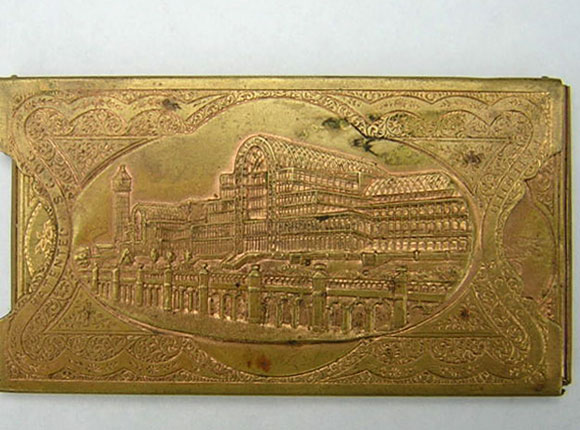
Needle Case front (photogrpah from eBay)
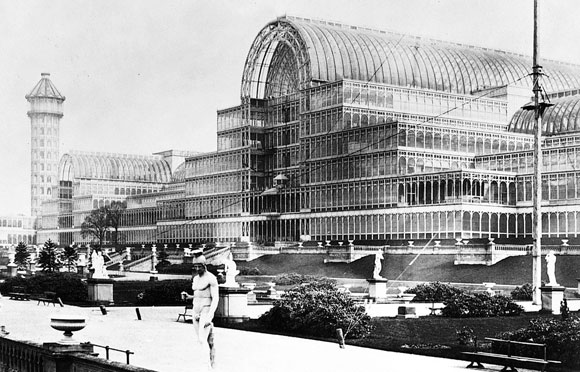
Photograph of the Crystal Palace circa 1900
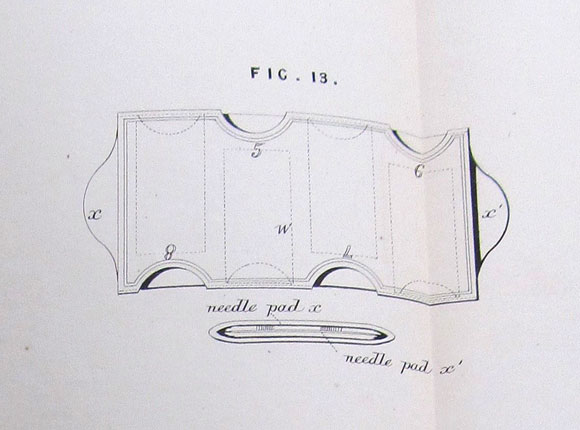
Patent
Design Details
Needle Case Type: |
Flat-Names |
Patent/Registered to: |
William Avery - Redditch Manufacturer and Albert Fenton of the same place, Machinist |
Patent/Design Representation #: |
Mechanical Patent #: 2998 (Fig. 13) |
Patent/Design Registration Date: |
October 14, 1869 |
Location of Patent/Design Registration: |
British Library - Business and Intellectual Property Centre - London
|
Reference #: |
1869-2998 |
Dimensions: |
8.1 x 4.6 |
Material: |
Brass |
Name Variations: |
W. Avery & Son - Redditch |
Other Variations: |
Royal with Vase (on both sides) |
Additional Photographs
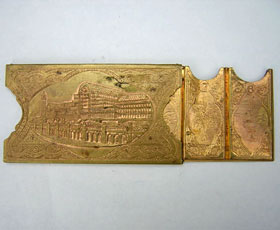
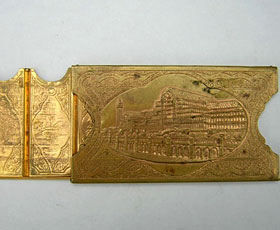
Front open left side and open right side
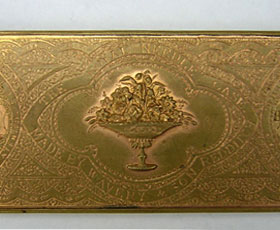
Back closed
Facts
The Great Exhibition of the Works of Industry for all Nations, also known as the Great Exhibition of 1851, was the first World’s Fair.
The idea for an international exhibition focusing on culture and industry was first proposed in the 1840’s by Prince Albert, Queen Victoria’s
husband. As a result, he became one of the fair’s main organizers. Located on 26 acres in the Hyde Park area of London, the fair’s
purpose was to show that Great Britain was the world’s leader in industrial development. It went down in history as the symbol of the
Victorian period.
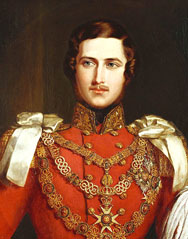
Prince Albert
History
The main exhibition building was the Crystal Palace, a 990,000 square ft. long structure made entirely of glass and iron. Cast
plate-glass technology was developed in 1848 by the Birmingham area company that provided the prefabricated panes of glass for the
building. Because of its modular design, using one sized glass panes, construction only took five months. At the time it was the
largest glass structure ever built. The fair took place over a six month period and had over 14,000 exhibitors, half which came from
Britain and the British Empire. Over six million people attended the fair which was equal to about a third of the population of Great
Britain at the time.
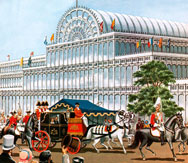
Miscellaneous
When the fair ended the Crystal Palace was easily dismantled and reconstructed with modifications and additions in a south London suburb
where it was used for special exhibitions and notable events. The grounds around the building were further developed with terraces,
sculpture, a variety of interesting fountains, a maze, an English Garden and even a railroad station which provided easy access for
visitors. Two tall towers were built, at the north and south ends of the glass building, to hold water for the gardens and the complex
became known as the Crystal Palace Park. It was most likely this building that William Avery used as the model for the needle case shown
on this page. The building fell into disrepair and was bankrupt shortly before World War I, but later made a comeback only to be destroyed
by fire in 1936.
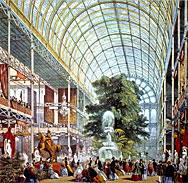
Interior of the Crystal Palace in 1851













